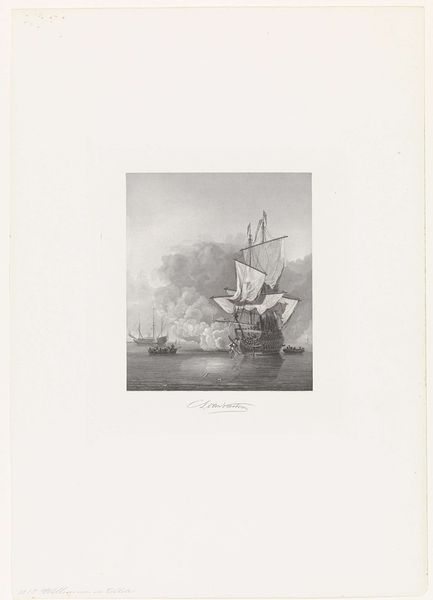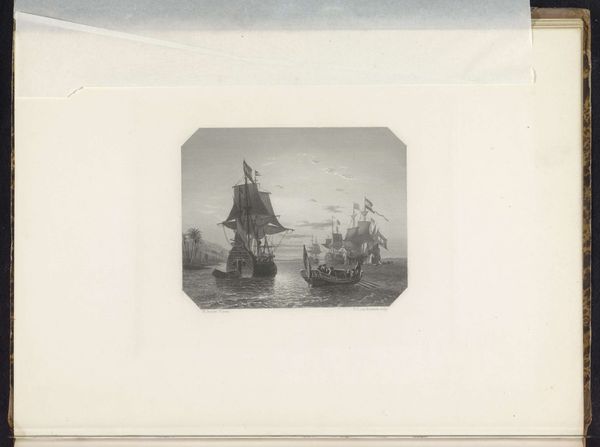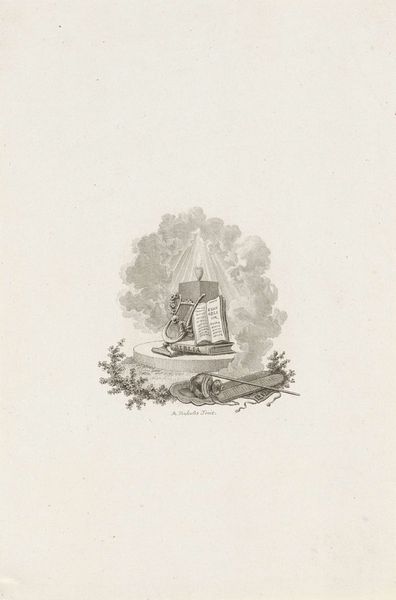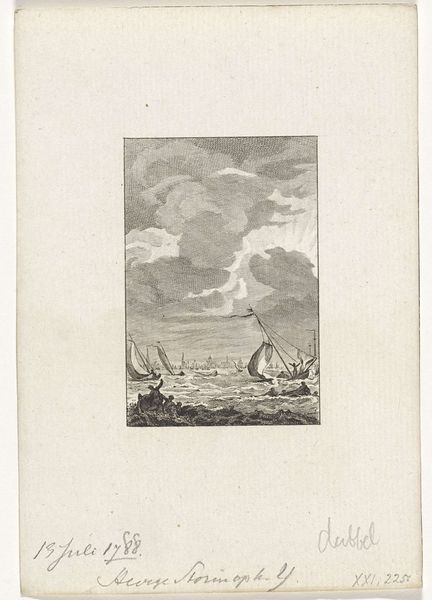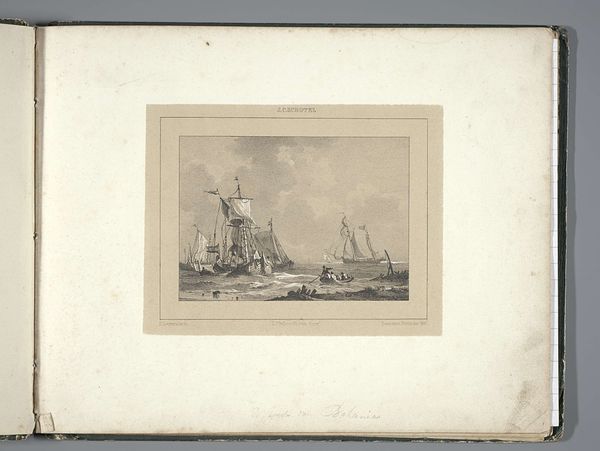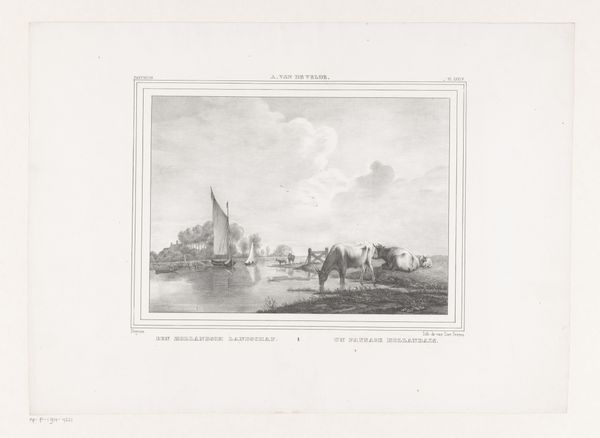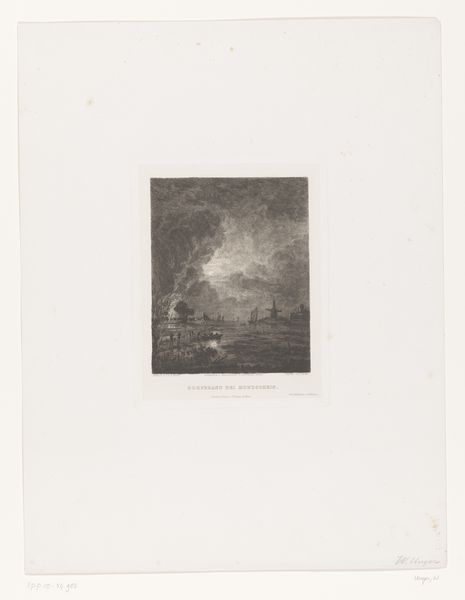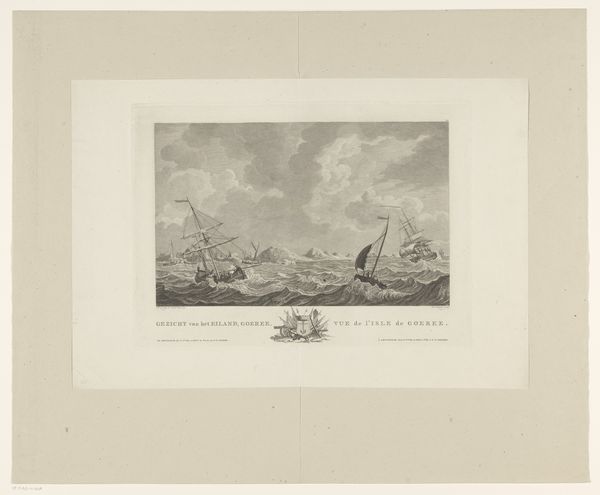
Spragge verdrijft de Hollandse vloot uit de monding van de Theems, 1667 1803
0:00
0:00
print, engraving
# print
#
landscape
#
history-painting
#
engraving
Dimensions: height 483 mm, width 379 mm
Copyright: Rijks Museum: Open Domain
Editor: So, this is "Spragge verdrijft de Hollandse vloot uit de monding van de Theems, 1667" by William Henry Worthington, made as an engraving in 1803. It feels very symbolic and perhaps even a little romantic, but also dramatic given it is a war scene, and there's a winged figure on top. What do you see in this piece? Curator: I see layers of meaning embedded within familiar images. The naval battle itself, rendered in meticulous detail, is not simply a depiction of historical conflict but a potent symbol of national pride and maritime power. But what about that figure on top? Does it strike you as unusual? Editor: Yes, it seems out of place given the historical accuracy in the rendering of ships. Curator: Indeed! This figure, with its wings and triumphant horn, invokes classical allegories of victory. Consider how the artist synthesizes realistic naval depiction with classical imagery to amplify its symbolic message, wouldn't you say? It transforms a specific historical event into an archetype of national triumph, echoing across generations. The placement of the winged figure, hovering above the framed depiction of naval combat, also reminds of religious icons. Does this perhaps signify something about the collective British memory, in that their navy's triumph are like divine acts? Editor: That’s a powerful interpretation. I hadn't considered the layers of cultural meaning embedded within it. So, the naval battle and allegorical figure play complementary roles. Curator: Precisely. The artist intertwines collective cultural memory of the event and timeless symbolic language. Notice, too, how the very *act* of memorializing, here, asserts power; to record the event with an image makes it timeless, to be circulated to all who consume it. Editor: I see the historical event with the use of visual symbols which add more cultural and psychological weight. I learned how intertwined the memory and iconic depiction can shape an event across time. Curator: And I find myself contemplating how representations of conflict reflect our evolving understanding of nationhood and collective memory. Thank you for helping me see that.
Comments
No comments
Be the first to comment and join the conversation on the ultimate creative platform.
